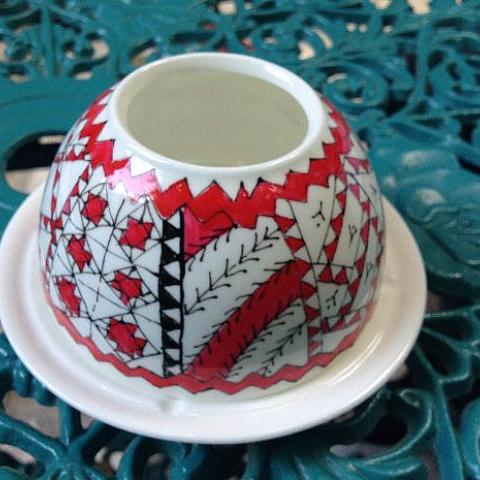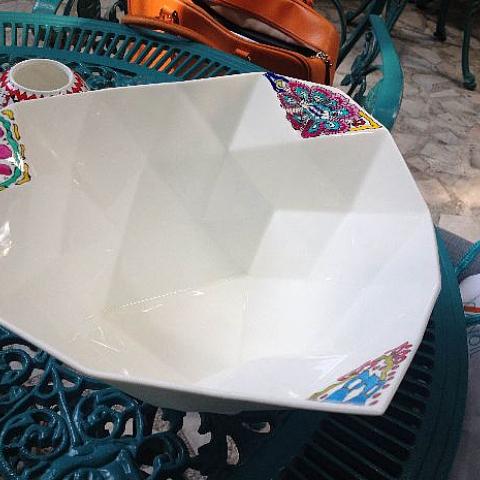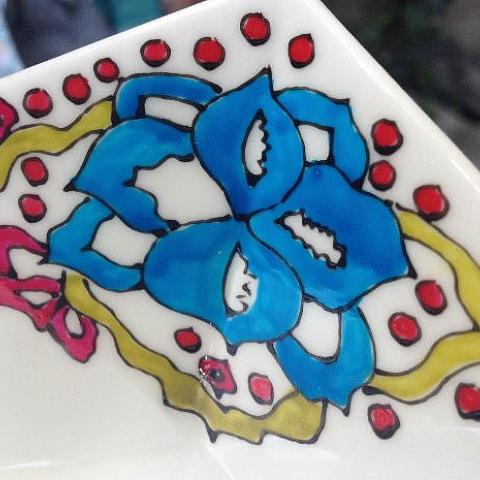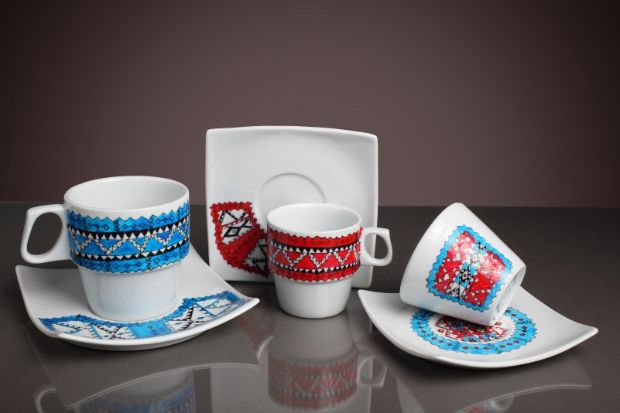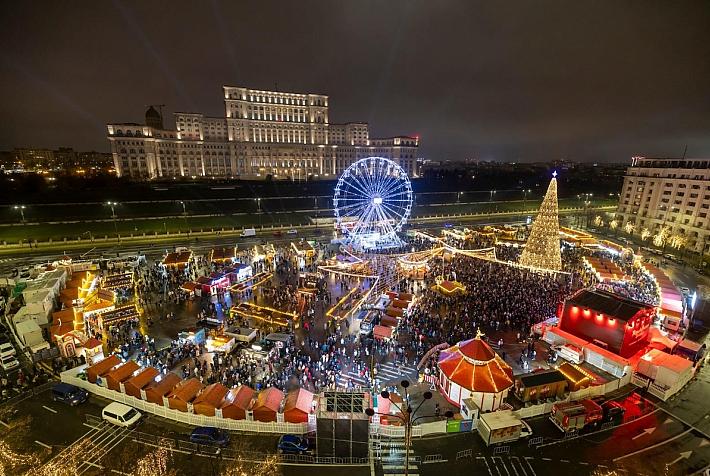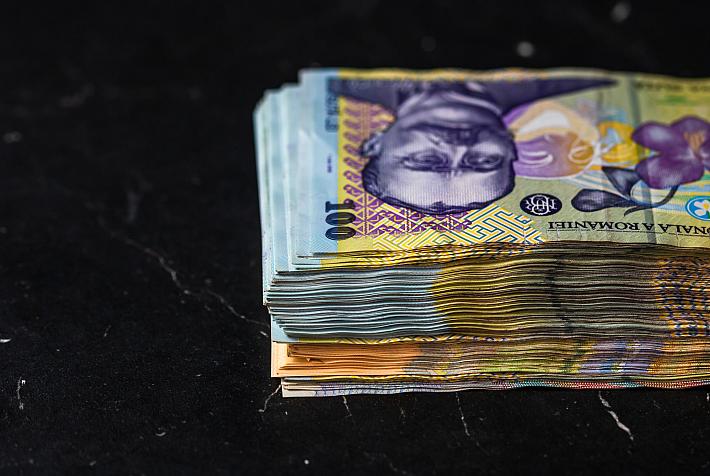The Romanian who paints life on a cup

From her small workshop in Bucharest, a Romanian entrepreneur hand-paints porcelain objects that make people happy, and which also craft a nice small business.
Weeks before big holidays, Alina Alecu spends long days in her one-room atelier hand-painting cup after cup, adding color to white objects, and lines to embroideries on plates and vases, drawing and wiping out what she’s just drawn, until the perfect shape emerges. She knows that in a short time somebody will enjoy the objects she has taken the time to embellish.
Alina has always had a passion for drawing, but other than drawing on everything she could put her hands on while in school, she didn’t do much about it. She studied engineering and then pursued a corporate career. But three years ago, her life changed. From international trade and management, she shifted to painting porcelain products.
"I was selling industrial equipment. I wanted something more feminine, something useful and nice at the same time,” she says. Alina was at the hair dresser when she flicked through an art deco magazine which presented hand painted plates, and something clicked inside. That was what she wanted to do!
Later that year, after taking a few courses on painting on porcelain, including one in The Netherlands, she started her new business: Porphyras. She knew she was on the right track when late in the evening, she was the last one to leave the porcelain painting classes. She would have painted non-stop.
Alina wanted to sell the objects and designs she created via an online boutique. Little did she know that only two years later, she’d be hand painting as many as 200 objects in as little as two weeks, and then delivering them to a corporate client for its March 8 gifts.
The large corporate clients that knocked on her door came as a surprise, first on Christmas of 2012, a year after Alina’s new business started off the ground. It turned out many companies were in need of personalized gifts for holidays, so Porphyras’ market expanded. “Demand is very big, I had no idea when I started that the products would be so much sought after,” Alina explains. Sometimes, when orders are too big, she even has to say no. One day, she hopes to have a large enough team so as not to refuse orders of 2,000 hand-painted pieces.
Only very few of the objects she makes are to be seen in her workshop. “They sell so fast, I usually never get to keep anything. But I take pictures of them.”
Alina, who is in her early 40 and a mother of one, speaks about the success of her products with pride, but also with a touch of modesty. While we speak, she mentions she has to deliver three orders by the end of next week. As she unwraps two objects she’s brought with her, she does not seem stressed over her upcoming deadlines. “I often wake up at night thinking what to do with this and that order, but in general my life got better. Even old ailments are gone!”
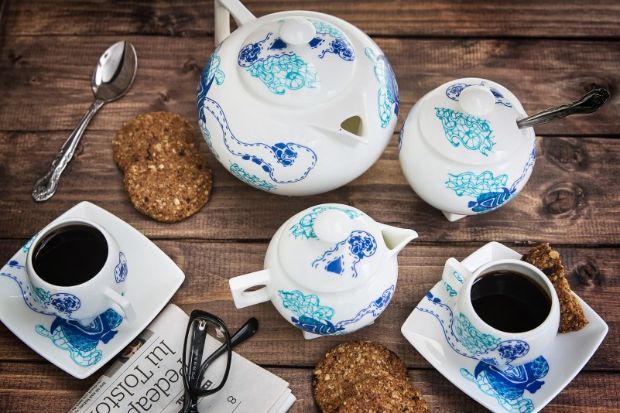 Two years after she started the business, she realized things were actually working for her. In her previous work life, she had signed contracts of millions of euros on behalf of her employer and engaged in cross-border trading. But Alina feels her life started again when she started to draw and paint for a living.
Two years after she started the business, she realized things were actually working for her. In her previous work life, she had signed contracts of millions of euros on behalf of her employer and engaged in cross-border trading. But Alina feels her life started again when she started to draw and paint for a living.
She learned about porcelain, and about how hard it is to find quality raw materials for the business. She learned the importance of networking and of knowing the right people – most of her clients were people she met after starting the business. She started going to deco fairs abroad, to find new suppliers and new buyers. Her most recent such endeavor was in New York, where she exhibited at the New York Table Top Market downtown Manhattan.
Porphyras’ products made in Romania reached all corners of the world, Alina says with pride. Cups and plates with Romanian traditional motifs ended up in Singapore, while others made their way to Dubai, Norway, the Netherlands, Belgium and Germany. “Many Romanians buy my designs and give them as gifts to friends and families abroad,” she explains. Some of her designs also made it to the Romanian Royal House as gifts.
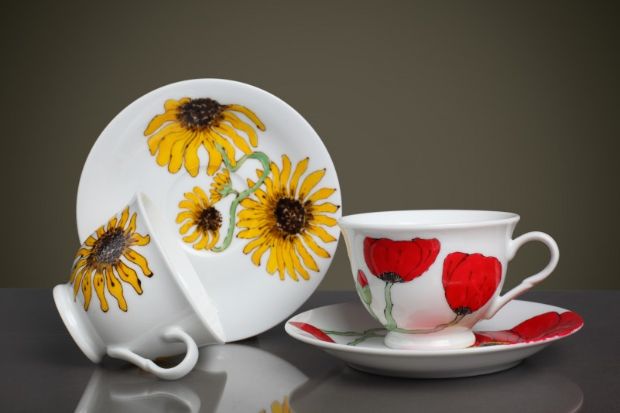 Most of her buyers now are Romanian, but Alina hopes to change that. And she wants to make big steps. She wants to start working with a large porcelain producer in the world and design her own line of products with them. “I am in talks with a Romanian company to do this, and I also want to sell my products at the MoMa shop in New York,” she reveals.
Most of her buyers now are Romanian, but Alina hopes to change that. And she wants to make big steps. She wants to start working with a large porcelain producer in the world and design her own line of products with them. “I am in talks with a Romanian company to do this, and I also want to sell my products at the MoMa shop in New York,” she reveals.
In a couple of years, Alina sees herself leading a team of designers. “I want to be able to never refuse orders of 2,000 items and more.”
Today, most of her orders come from individual buyers, many of which have bought from her in the past. Only 30 percent of the orders come from corporate clients, but they make up for the difference in value. Individual buyers and corporate clients hold equal weights in Alina’s sales.
On average, she has around two orders a week, which make for over 100 orders a year. Creativity does have value – her profit margins go above 50 percent.
Prices range from RON 50 a piece (some EUR 11), and up to RON 600 (or some EUR 133) for a set of products. “The price range is adaptive. This is what other companies don’t understand, and often one sees a big gap between product quality and price,” Alina explains.
Her market niche is not very big yet – only three to five companies offer the same kind of products in Romania. “Companies that matter,” she adds.
As she carefully wraps the two items she’s brought with her, the last of their kind in her collection, Alina already thinks about the next objects she will create for the art deco fair in Paris this fall.
By Corina Chirileasa, corina@romania-insider.com
(photos: Porphyras, Romania-Insider.com)






